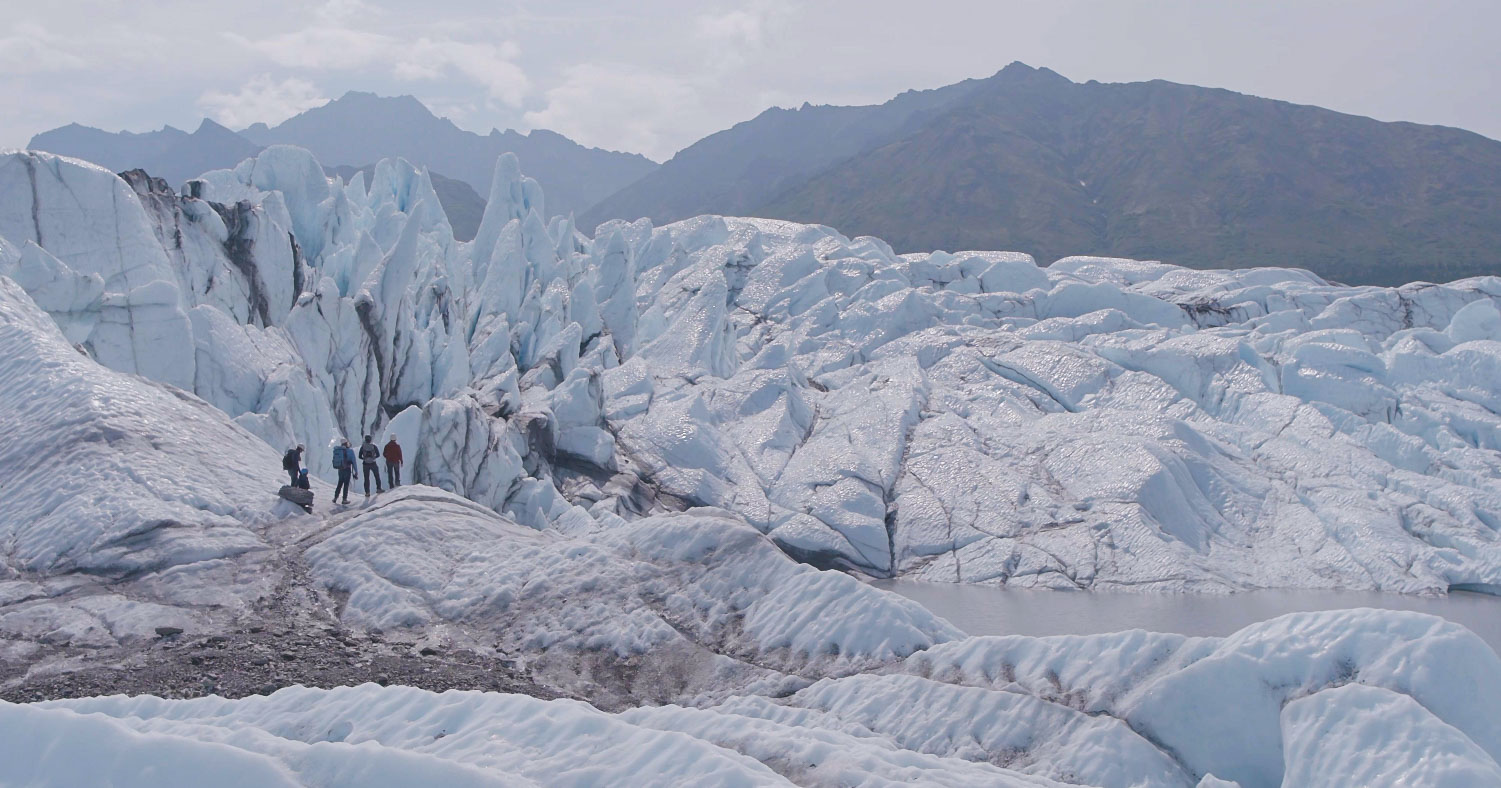Glacier Ice Formations

Alaska’s Glaciers
One aspect that Alaska is known for is its abundance of glaciers, and for the variety of glaciers. This region has thousands of micro-ecosystems that amount to some amazing macro effects. Due to the last glacial period, about 20,000 years ago, we can observe areas like the Great Lakes as after-effects. We can notice in the more northern and arctic regions how different glaciers still exist and how the ecosystems help them continue.
Ice Fields
An ice field is considered a type of glacier if the snow during accumulation time (winter) is more than what melts away during the melt season (summer). Ice fields are giant masses of ice that cover a large area. On the other hand, there are also ice caps, another large mass of ice a bit smaller than what we would see in an ice field.
Mountain (Alpine) Glaciers
Mountain glaciers, sometimes referred to as alpine glaciers, are a mass of ice that forms in mountain regions. This means that the ice is surrounded and encompassed by mountains. This is where we can observe a more accurate picture of the description of glaciers being a ‘river of ice.’ Often, alpine regions have cooler temperatures due to altitude, weather system fluctuations, and areas with sun exposure. Snow and ice accumulation do well in this environment.

Valley Glaciers
Valley glaciers typically have an accumulation point at the base of nearby mountain ranges. From this, ice forms and normally works with gravity to move down valleys. They continue to etch into the land below as they slowly carve away at mountainsides and contribute to the valley formation and changes.
Piedmont Glaciers
Piedmont glaciers are similar to valley glaciers in that they typically flow in a valley shape. Where a Piedmont glacier differs is that, normally, there is a pinch point in the landscape. This creates a bottleneck effect of sorts. The ice will spill out after this pinch point into a more lobe-like shape than a valley glacier.
Tidewater Glaciers
Tidewater glaciers do occur in the coastal regions. They start on the land, and eventually, end by spilling into the ocean. Tidewater glaciers are where we can observe more ice caving due to the influence of the sea and water eroding at the ice sheets. Tidewater glaciers often produce fjords and ice shelves. These glaciers do have far more activity than their land-based counterparts.
Hanging Glaciers
Hanging glaciers are interesting as they typically sit alongside or above an already existing glacier. These ice masses hang over and only partially connect with parts of the main glacier. This glacier variety is characterized by its abrupt stop which is more of a blunt cliff of ice.
Cirque Glaciers
Cirque glacier occur more often in mountainous regions. These are bowl-shaped glaciers that have made an impression on the rock’s surface. This bowl-like shape creates one of nature’s most beautiful ice amphitheaters.

The Beauty of Glaciers
Beyond the variety of glaciers is the natural beauty each one displays, and the many reasons why glaciers are so vital to the Earth. The thousands of glaciers that still exist across the world are some of our cleanest and best-stored water sources. Hopefully, at a sustainable rate, glacier meltwater can continue to offer vital nutrient resources to the land and bodies of water.
Glaciers are the base and start of many food chains and a main reason for the abundance of resources in regions where they can be found. Today, the technology of hydroelectric power allows glaciers to be part of a recycling power source. From irrigating crops to providing clean drinking water and so much more, we need to respect and maintain this utmost essential resource.
